
The White House recently compiled a report on the money associated with illicit narcotics across the U.S. According to their study, illicit opioids, particularly fentanyl, cost Americans $2.7 trillion in 2023 alone. This is quite a jump from 2021, when that number was closer to $150 billion.
Some of this increase is attributed to inflation and the increased cost of living that we’ve seen over the past five years. When those factors go up, treatment costs likewise increase, public health systems get strained, and drug prices go up.
We wanted to better understand how much money is being spent by the average American on narcotics. So, we polled 1,000 drug users about their spending habits. In addition to which drugs are costing Americans the most amount of money, we also discovered how much is being spent daily to obtain them, as well as the legal boundaries people had crossed to afford them.
Read on to see what we learned about the real cost of drugs in the U.S. today.
What People Spend on Drugs
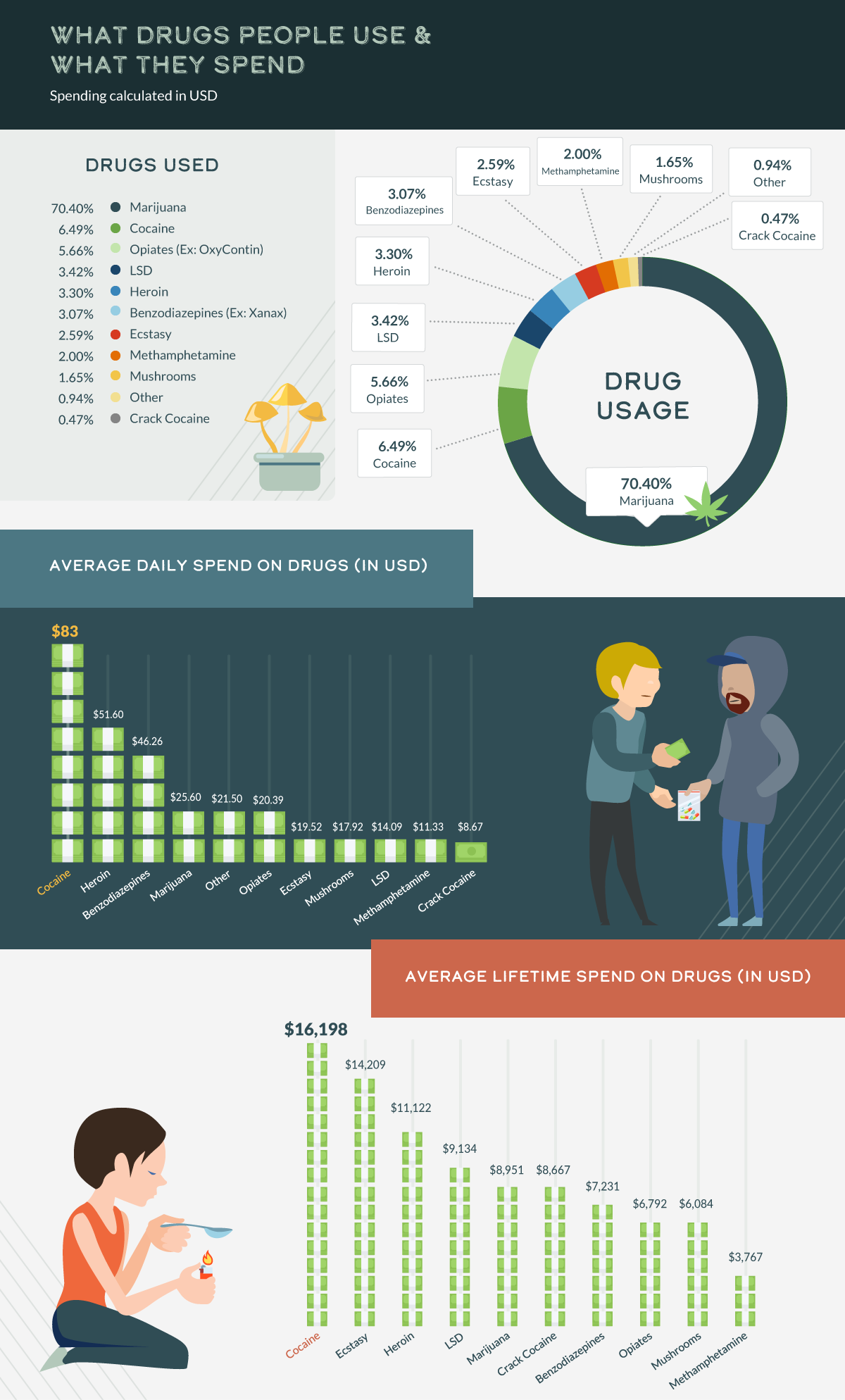
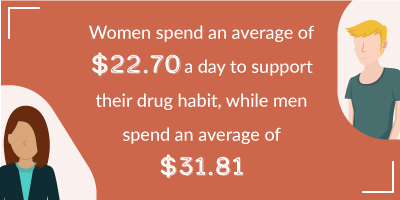 Of the 1,000 drug users we surveyed who acknowledged at least one misused substance in the past 12 months, more than 70% told us they’d used marijuana at least once. While some states across the country have legalized marijuana for various purposes, including recreational use, the National Institute on Drug Abuse indicates that misuse of marijuana can lead to dependence, and that nearly a third of those who use marijuana develop some degree of marijuana use disorder. Their daily spend eclipsed $25 a day, equating to nearly $9,000 a year.
Of the 1,000 drug users we surveyed who acknowledged at least one misused substance in the past 12 months, more than 70% told us they’d used marijuana at least once. While some states across the country have legalized marijuana for various purposes, including recreational use, the National Institute on Drug Abuse indicates that misuse of marijuana can lead to dependence, and that nearly a third of those who use marijuana develop some degree of marijuana use disorder. Their daily spend eclipsed $25 a day, equating to nearly $9,000 a year.
Individuals who used addictive stimulants like cocaine accounted for less than 7% of those we surveyed, but they spent more than three times the amount of money on drugs every day than those who told us they’d missed substances like marijuana, opiates, or ecstasy. At more than $83 a day on average, a person who becomes dependent on cocaine could spend more than $16,000 throughout their lifetime on obtaining the substance.
Prescription Drug Epidemic
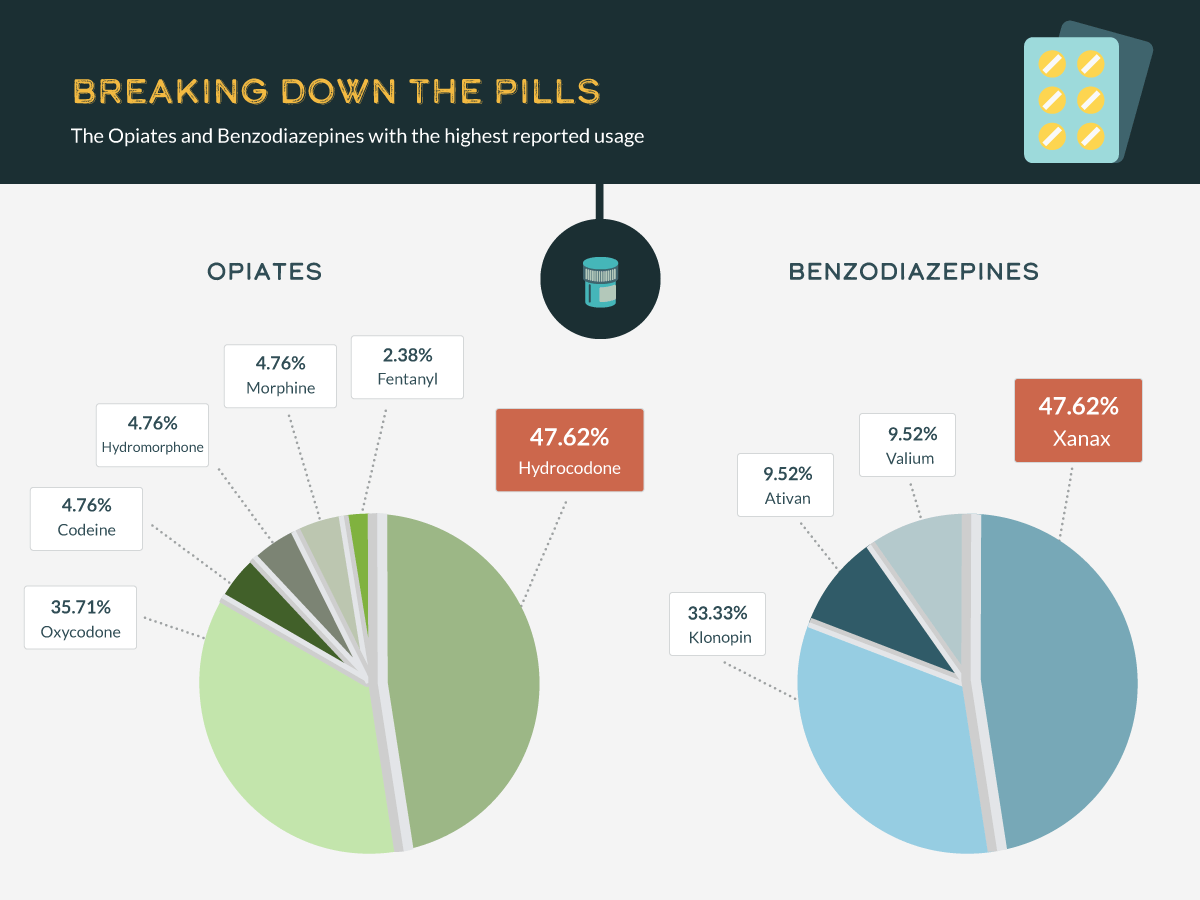
In 2024, spending on prescription drugs reached a high of $805.9 billion across the country, which represented a 10.2% increase from 2023. As spending and distribution have risen significantly over time, the misuse of prescription drugs in a non-medical capacity has also grown to record levels.
Prescription opiates including hydrocodone, oxycodone, and fentanyl are responsible for nearly half of U.S. opioid related deaths. Of these drugs, hydrocodone substances like Vicodin were the most common among those we surveyed, accounting for almost 48% of total opiate misuse. Oxycodone substances like Oxycontin and Percocet totaled more than a third of opiate misuse, while fentanyl substances accounted for less than 3% of total use.
Among those who told us they’d misused benzodiazepines, which can be highly addictive like opiates, almost 48% reported using Xanax compared to a third who acknowledged misusing Klonopin. Ativan and Valium each account for less than 10% of total benzodiazepine use.
What People Are Spending Each Day
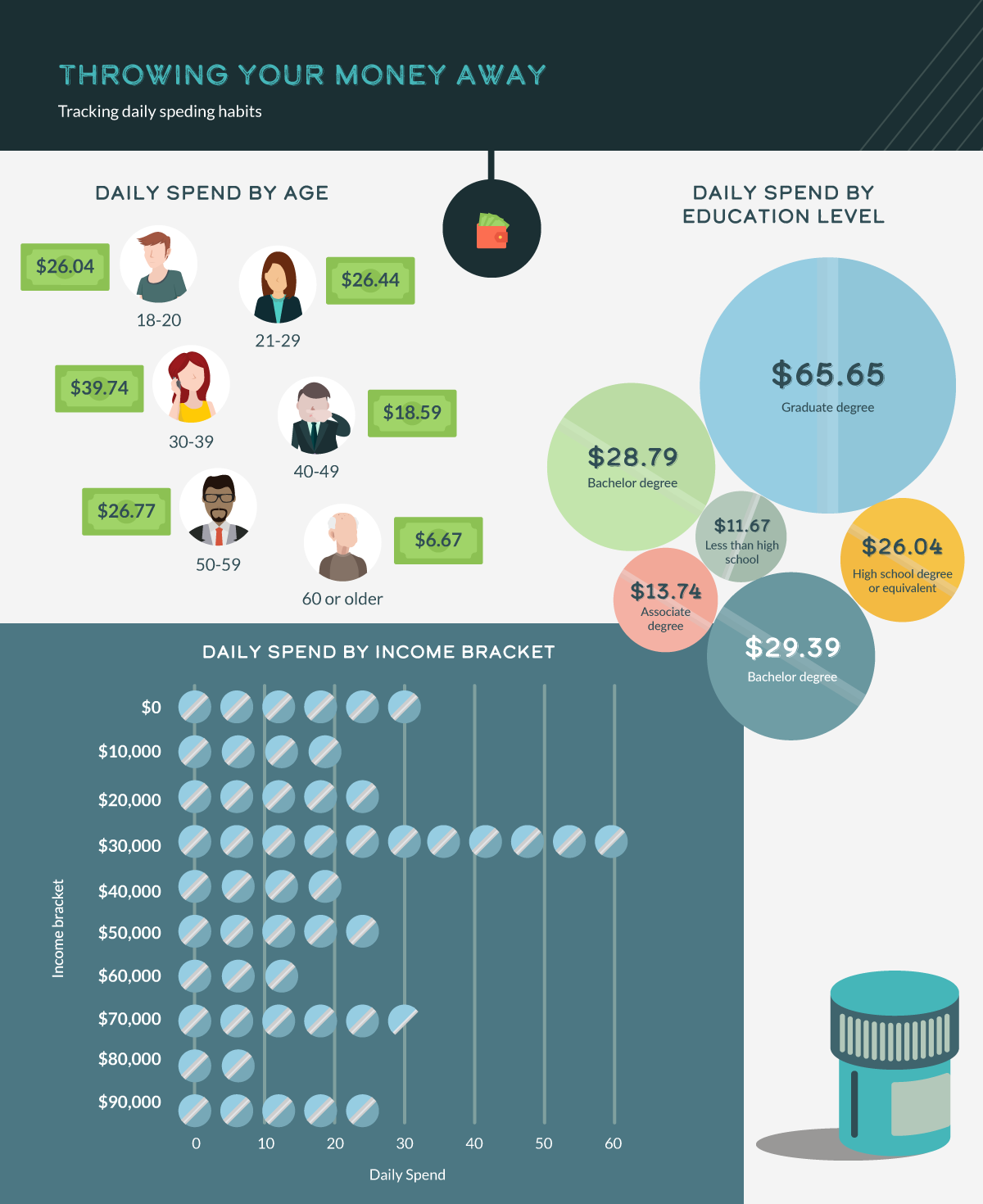
Our survey found that of the 1,000 participants who shared their experiences with drug abuse, those with higher levels of education spent more per day on average to acquire illicit substances than those who were less educated.
While participants without a high school diploma (or equivalent) told us they spent nearly $12 a day on drugs, those with a high school degree acknowledged spending more than twice that amount, and survey respondents with a bachelor’s degree spent more – averaging almost $29 a day.
Those with a graduate degree identified spending the most on daily drug use out of everyone we surveyed, averaging nearly $66 every day.
By age, those between 30 and 39 years old had the highest average spend on illicit substances, costing them nearly $40 every day, and participants earning between $30,000 and $40,000 annually were more likely to spend more on drugs than those made more or less.
Breaking The Law
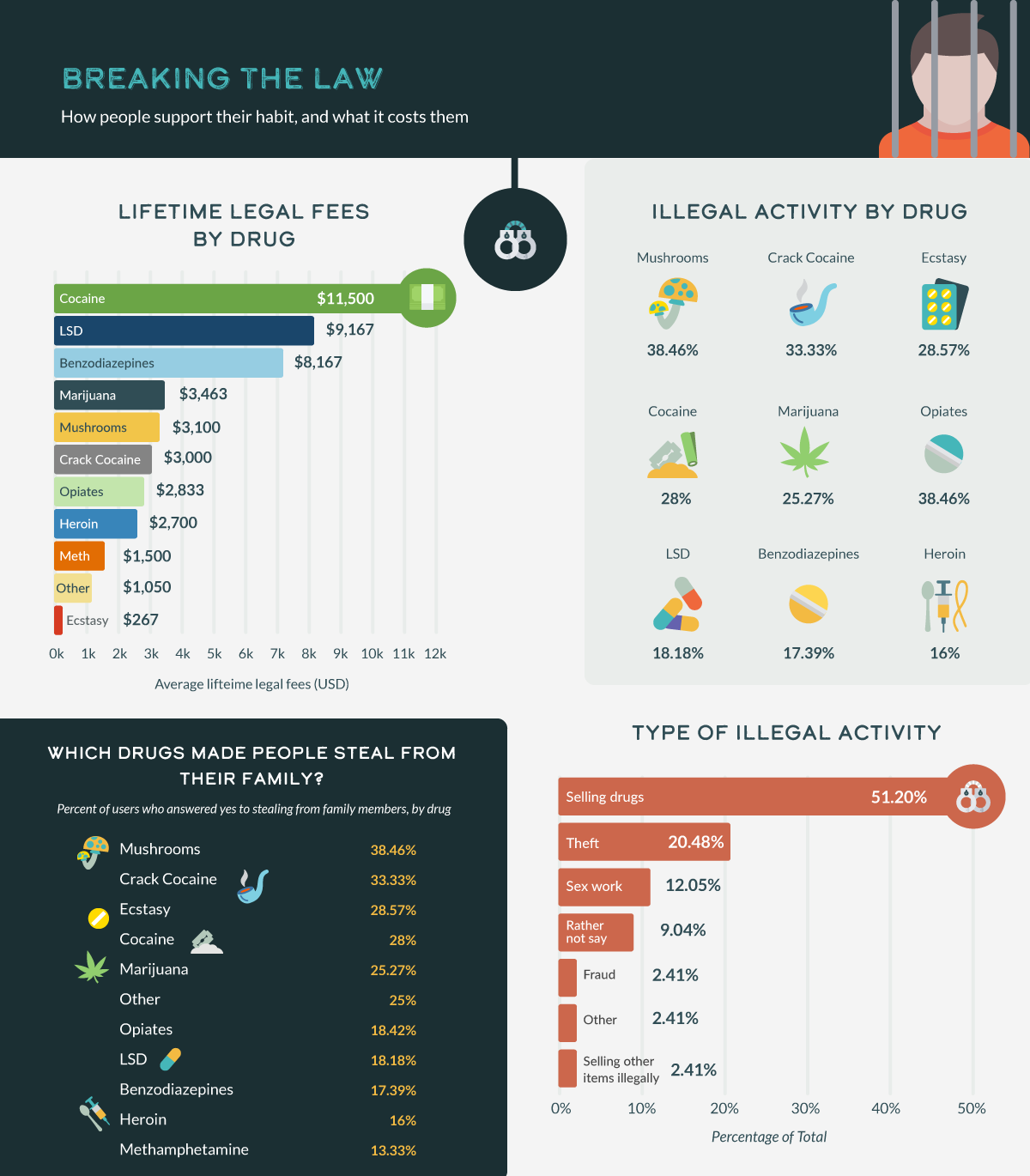
Our study found that even those who reported earning less than $10,000 a year still spent over $30 a day on average to acquire drugs. Given the cost of obtaining these illicit substances, we asked our participants what lengths they had gone to in the past to afford them.
Some told us they had stolen from friends and family to fund the illegal purchase of narcotics. More than a third of those who said they’d used mushrooms or crack cocaine in the past also told us that they’d stolen from people in their lives to pay for these substances while more than one in five who had misused cocaine and LSD said the same.
Over half also said they’d sold drugs themselves to be able to purchase them, and more than one in 10 people who’d engaged in illegal activity to buy drugs said they’d participated in sex work.
The chronic misuse of substances like cocaine and heroin can negatively impact the area of the brain that controls decision making, potentially leading to tragic and costly mistakes.
The Rise of Cryptocurrency and Darknet Spending
As the digital revolution continues to proliferate nearly every aspect of our lives, individuals are now heading online to purchase illicit substances, including fentanyl. Much of this activity takes place on the darknet.
Put simply, darknet websites have the look and feel of a conventional site, including images, product descriptions, and vendor ratings. However, there’s one major difference — their operations use encryption technology and special cryptocurrencies to make sure all transactions are anonymous.
As a result, unscrupulous sellers can use these sites to market everything from illegal drugs to stolen items, hacking systems, and even wildlife. This ease of access is attractive to people who can’t easily obtain the substances in their everyday lives.
In 2024, the global darknet marketplace processed more than $1.7 billion in drug transactions, fueled by cryptocurrency. This represented an uptick of more than 20% since 2023.
Drug Spending By State
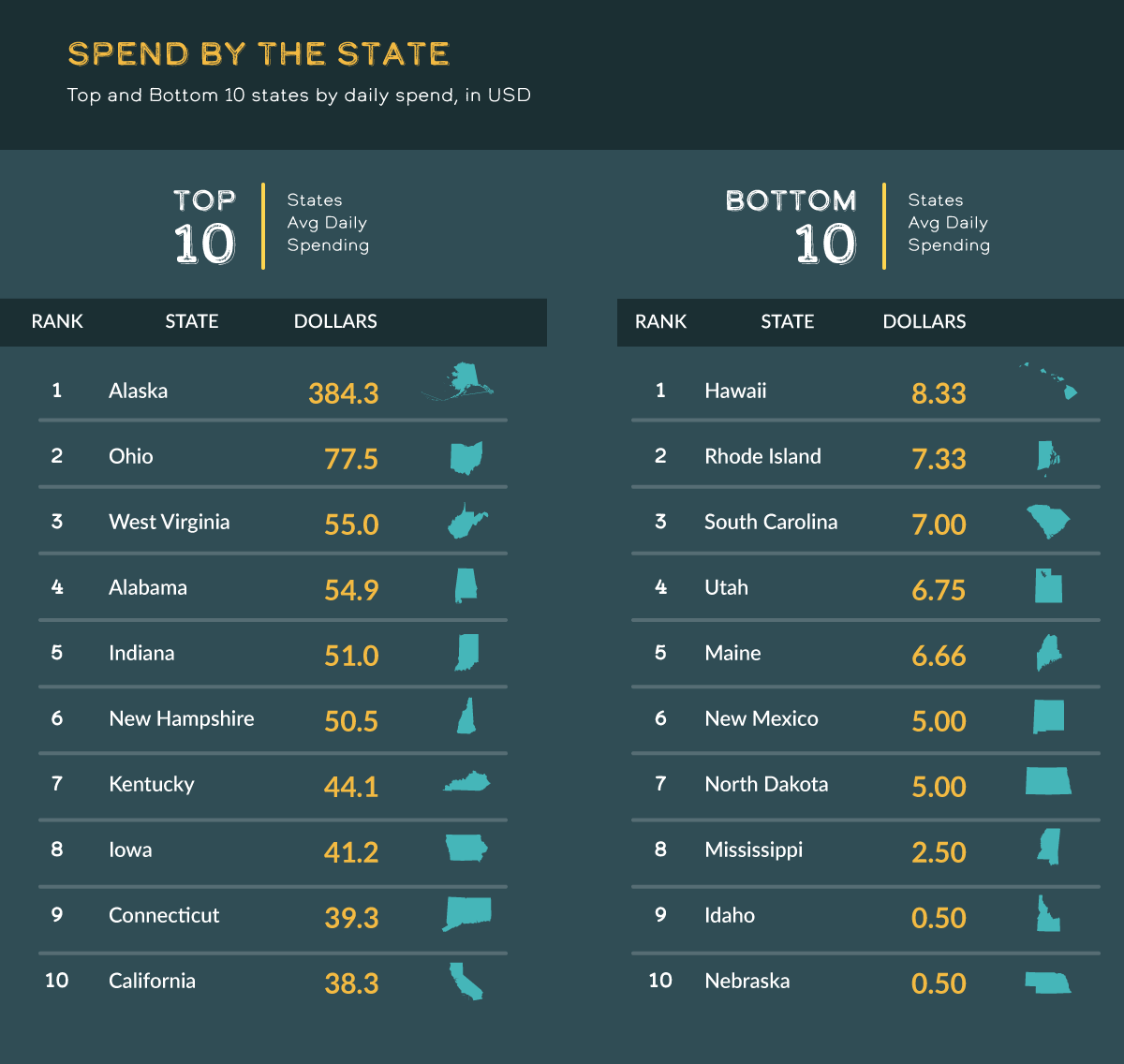
Across the U.S., survey participants told us that some states were spending more every day on illicit narcotics than others.
Those we polled from Alaska identified that their average daily spending for drugs was over $384 – nearly five times the next highest state spending.
States like Ohio (over $77), West Virginia ($55), and Alabama ($54) had high rates of daily drug spending as well. In Ohio, opioids like heroin are also partially to blame for the cash spent across the state on drugs.
States with the lowest overall average spending included Nebraska, Idaho, and Mississippi, where money spent per day on drugs averaged less than $3 according to those we surveyed.
Overdrawn
More money is spent on illicit drugs daily and yearly than anyone – from the United States government to the loved ones watching someone struggle with addiction – would want to see. Increasingly, communities across the country are calling out for help.
If you or someone you know needs help breaking the chain of substance use, you can use our online database to find a trusted local rehab center near you. The cost of addiction can be higher than you think, so start breaking the cycle today.
Methodology
We surveyed 1,000 drug users to find out their daily drug spend, and broke down the results by drug type as well as various demographic data. When looking at state level data, we excluded any states with less than 10 responses. We also excluded any outliers that were clearly unrealistic, like a 18-19 year old saying they have spent $99million on drugs so far, or someone saying they spend more than their yearly income each day.
Want to use our study?
Please feel free! All that we ask is that you include a reference back to this page so your readers can view the full study.
